There are several major threats to New England stone walls. All have been repeatedly brought to my attention by those attending my talks. The photos and captions below illustrate the gallery of issues. The paragraphs below each explain the situation in more detail.
STRIP MINING
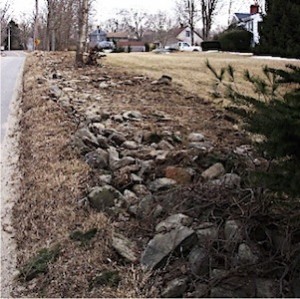
Most damaging is the legal, wholescale strip-mining of New England’s abandoned stone walls from private properties for the purposes of commercial sale. Walls may be protected on roadsides, but most have no protection on parcel interiors. Ironically, the many wetlands left by land-use changes are protected by federal and state law, but the stone wall drylands of that same landscape transformation are not. Indeed, such walls are both habitat and cultural ruins. To mine the stone in one place for the purpose of building another elsewhere constitutes the transfer of archaeology into architecture. Typically, this occurs from properties that are land rich and house poor, to properties that are house rich and land poor. The best solution here is to create incentives for keeping interior walls intact as part of the cultural commons, perhaps following the model of conservation easements.
THEFT
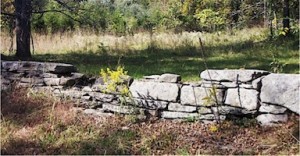
Stone walls are being stolen at many scales: stone by stone, course by course, and wall by wall. Often the capstones of well-built walls go missing, stolen by rustlers who will “fence” them for sale at construction supply establishments. In some places, however, entire walls are stolen while the owners were away on extended stays. There is very little data on this phenomenon because taxpayer-funded law enforcement officers are already stretched thin by more urgent concerns. And arrests are challenging because the tracing of stone back to its source is a great technical challenge.
UNNECESSARY CUTS
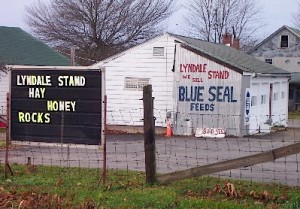
Property owners with old walls often damage them with multiple breaks and cuts: farm more than would be necessary if they gave the situation more thought ahead of time. This is happening in all of our neighborhoods, including mine. The basic idea is to minimize necessary damage.
COMPROMISING LOCAL TRADITION
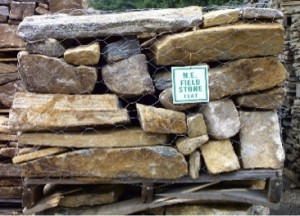
This is the biggest problem is in wealthy districts where property owners contract with construction companies either to build new walls or to re-build old ones from the stone already there. This works out well when the landowners try to honor the local building tradition. But more often than not, they pick the wall like one might pick wallpaper, thinking more about what they like personally, and less about how the pattern will fit in the neighborhood. A common result is the building of oversized walls with artistic patterns that are excessively ornate, for example spikes, portholes or turrets. These will be judged ugly or out-of-place by long-term residents who are psychologically and socially invested in what properties should look like, based on the local folk art style.
OVERGROWTH
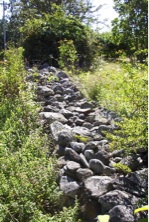
In the woodlands that grew back on old farms, the closed forest canopy has shaded out the vigorous herbaceous growth of vines and saplings, giving walls their familiar, mossy, abandoned look. When the land is cleared and exposed to sunlight, however (such as along new roadsides and driveways), the walls can develop a heavy overgrowths that obscures the walls and and helps break them down. This is a consequence of land clearing. At this point, keeping the wall clear of vegetation is usually the right thing to do.